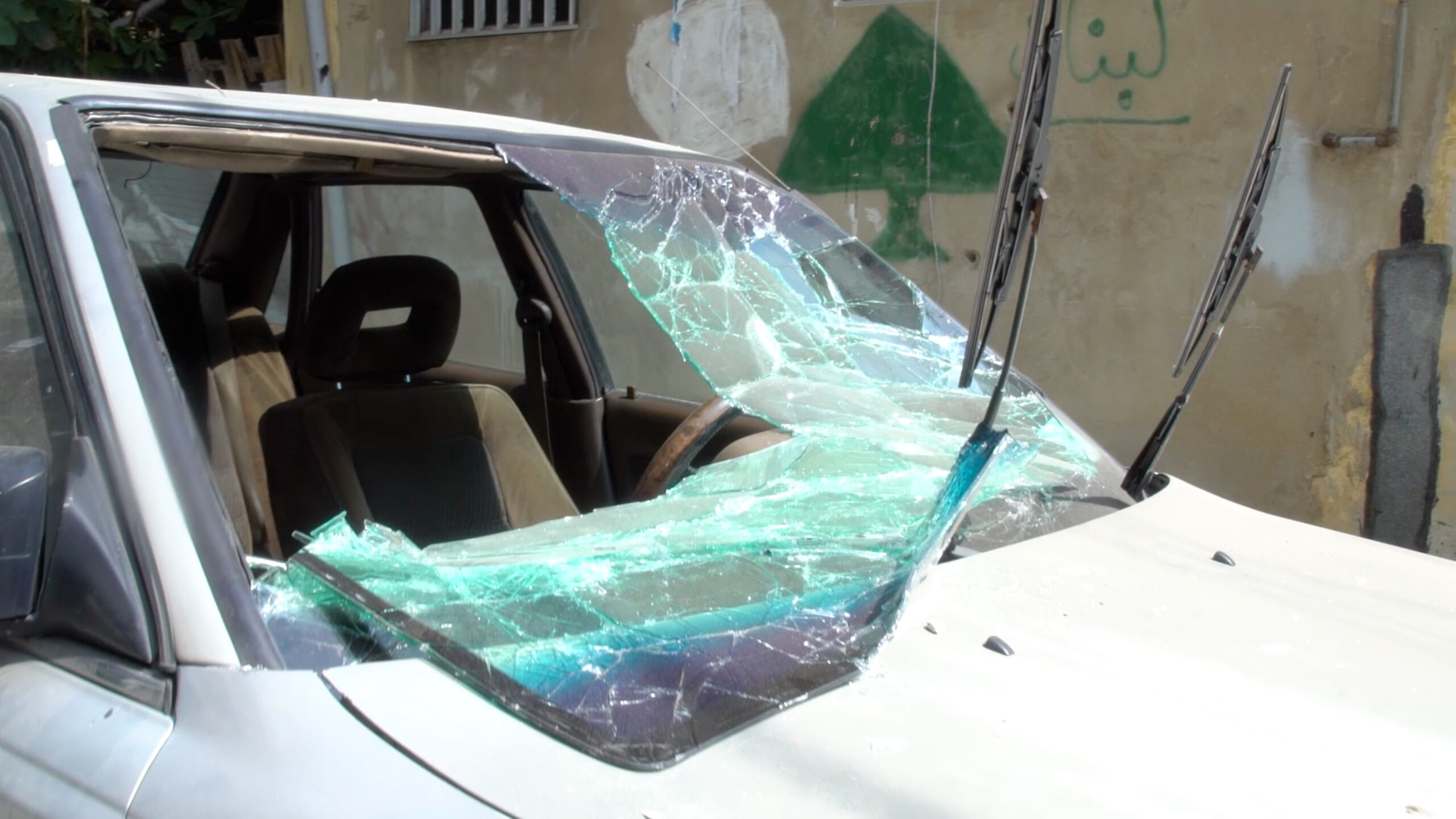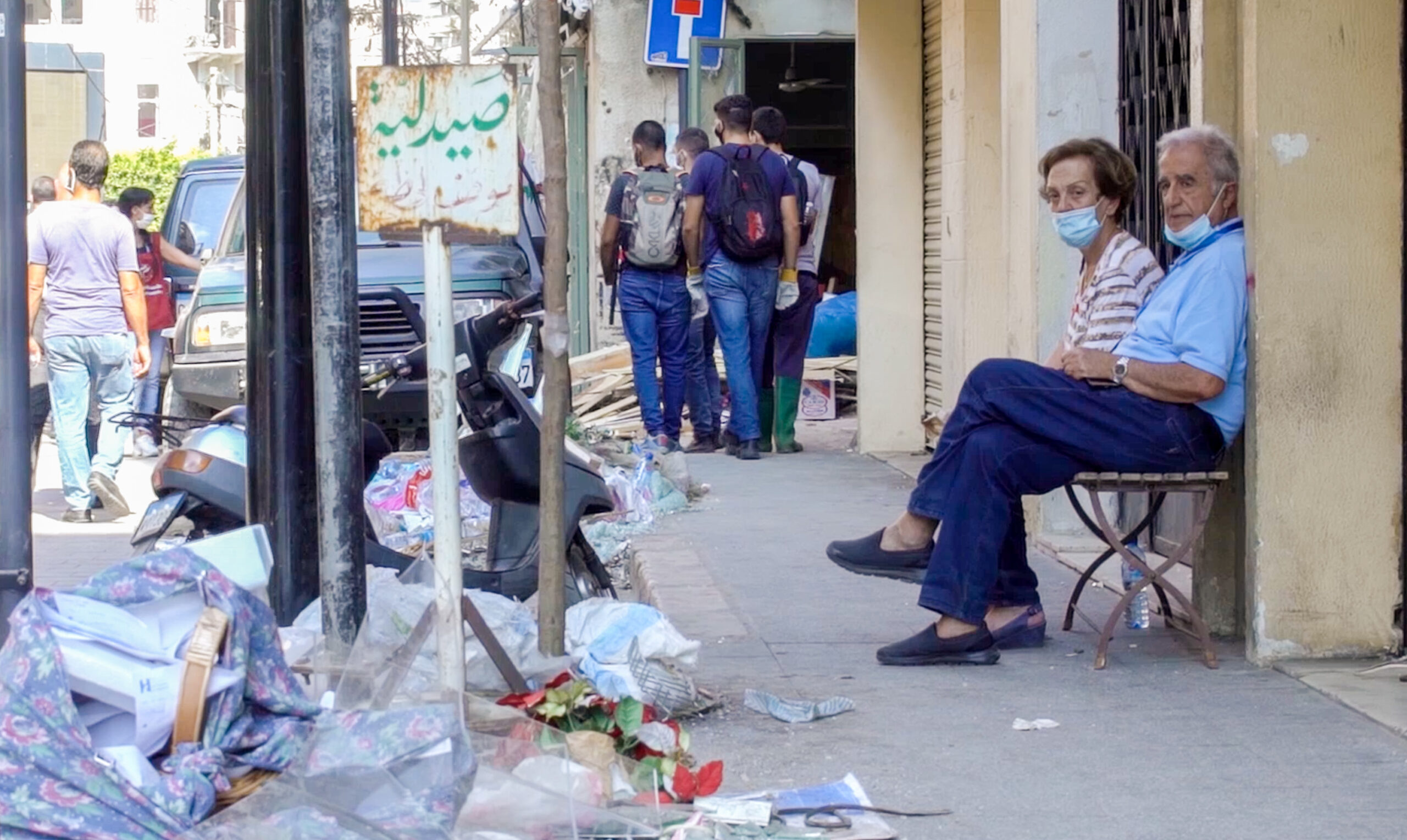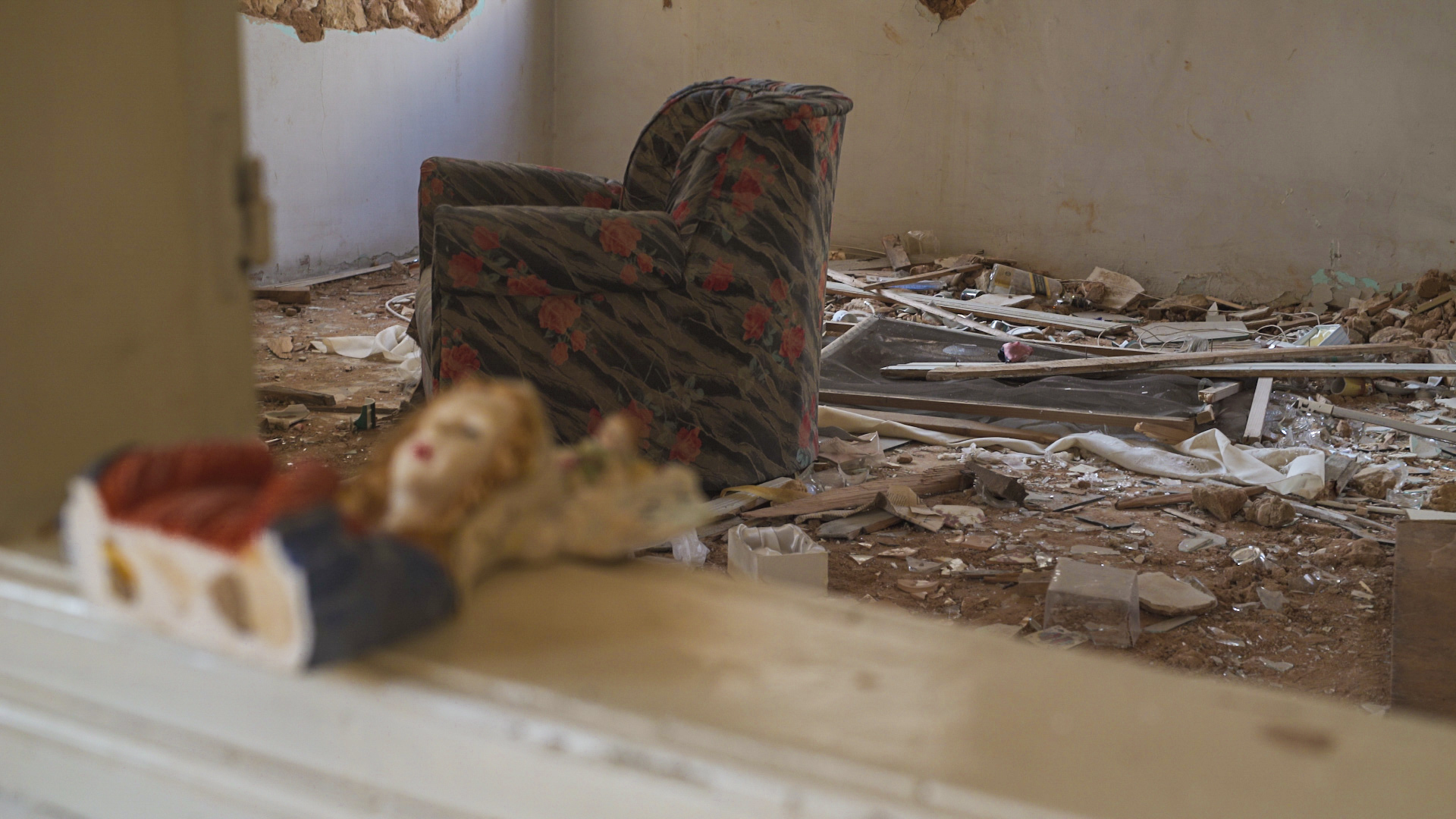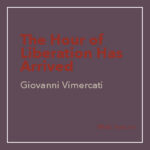
How can images probe, think through and elaborate on an event at a time when any event is concurrently filmed or photographed and immediately shared online? In the case of the explosion that shook Beirut to its tormented core on August 4 and left it in pieces, how can we use images to go beyond what they show on the surface? How can we delve past their spectacularly traumatic outer layer? Could filmmakers in this scenario play the iconoclastic role of refraining from (re-)producing yet more images?
These were some of the questions left unanswered by Carol Mansour’s latest film, Shattered: Beirut 6:07. Bearing a title similar to that of an unaffiliated series of widely criticized fictional shorts that Saudi-owned broadcaster MBC had promptly produced in the wake of the explosion, Mansour’s 20-minute film distinguishes itself, if nothing else, by being a documentary.
Documented in Mansour’s film, however, are the director’s own musings and reflections on the explosion. True, Mansour’s considerations exist beyond the onanistic sphere of her own self in that they arguably were and still are shared by many Beirutis who survived the blast. For them, the film’s images and words look and sound (un)comfortably familiar. However tactful, pondered and well-meaning it may be, the film fails to frame these events in any new light. Shattered: Beirut 6:07 diligently reiterates what we have already been through, both physically and emotionally, without opening a new perspective, without polemically challenging our understanding and impulsive response to the blast and the traumatic crater it left in the city and in ourselves.
Some of the reflections Mansour re-proposes are indeed embraceable, including rejection of the buzz word “resilience” that the blast finally occasioned. In the wake of the explosion, people lashed back at the sentimental overuse of “resilience,” a word so often used to ratify Lebanese surrender and romantically extoll the supposed virtues of putting up indefinitely with the injustices of daily life; this is a word that over the years has tellingly replaced “resistance.”

After August 4, many Lebanese people, rightfully so, do not intend to go on being resilient. At the same time, it’s been painfully difficult to imagine a way out of Lebanon’s current woes that is not individual; that is, a collective response that goes beyond charity to establish durable networks of mutual aid and solidarity. A way out that is, in other words, also a way forward.
The subjective tone and contemplation of Mansour’s film may then be read symptomatically, as the aesthetic rendition, however unintentional, of a shared inability to react in any way but individually to the human-made tragedy of August 4. Far from a deliberate choice, an individualized response to a public issue is the reflexive result of a society that has successfully placed the individual at its exclusive center. Everything from happiness to professional fulfillment is measured exclusively on an individual scale. No wonder responses to catastrophes follow the same social pattern.
Shattered: Beirut 6:07 ends with images of glass shards swept off the streets and thrown into a garbage container as the director muses on how an unnamed “they” have sucked the life out of Beirut and its inhabitants. While the criminal responsibilities of the Lebanese ruling class should neither be forgotten nor forgiven, the rhetorical narrative of “us vs. them” tends to stress the supposed ethical dimension of injustice to overlook its material premises. What if Lebanese politicians are the result and not merely the cause of a ruthless system?
The explosion that killed more than 200 people and left thousands homeless can hardly be blamed on incompetence. The Lebanese ruling class is anything but incompetent; on the contrary, Lebanese capitalism is among the most effective in the world. Everything from public space itself to healthcare has been successfully monetized. The Beirut port is the temple of multi-confessional capitalism, where all sectarian divisions are diplomatically dissolved for the holy sake of short-term profit.
Not that artists should be tasked with any didactic function, but can images counter-intuitively (re)frame the destruction of the Beirut port? Are there stories to be told that go beyond moral outrage and its mournful dead end? Can filmmakers produce or reconfigure images that outlive the lifespan of a trend topic now that first-hand testimony is no longer their exclusive prerogative?


Giovanni Vimercati
Giovanni Vimercati is a freelance critic whose work (often under the pseudonym Celluloid Liberation Front) has appeared on Cinema Scope, The Guardian, Mubi, LA Review of Books, Film Comment, Variety, New Statesman, Filmmaker Magazine, Sight & Sound, Huffington Post, Reverse Shot, The Independent, Cineaste, The Brooklyn Rail and other international outlets.





